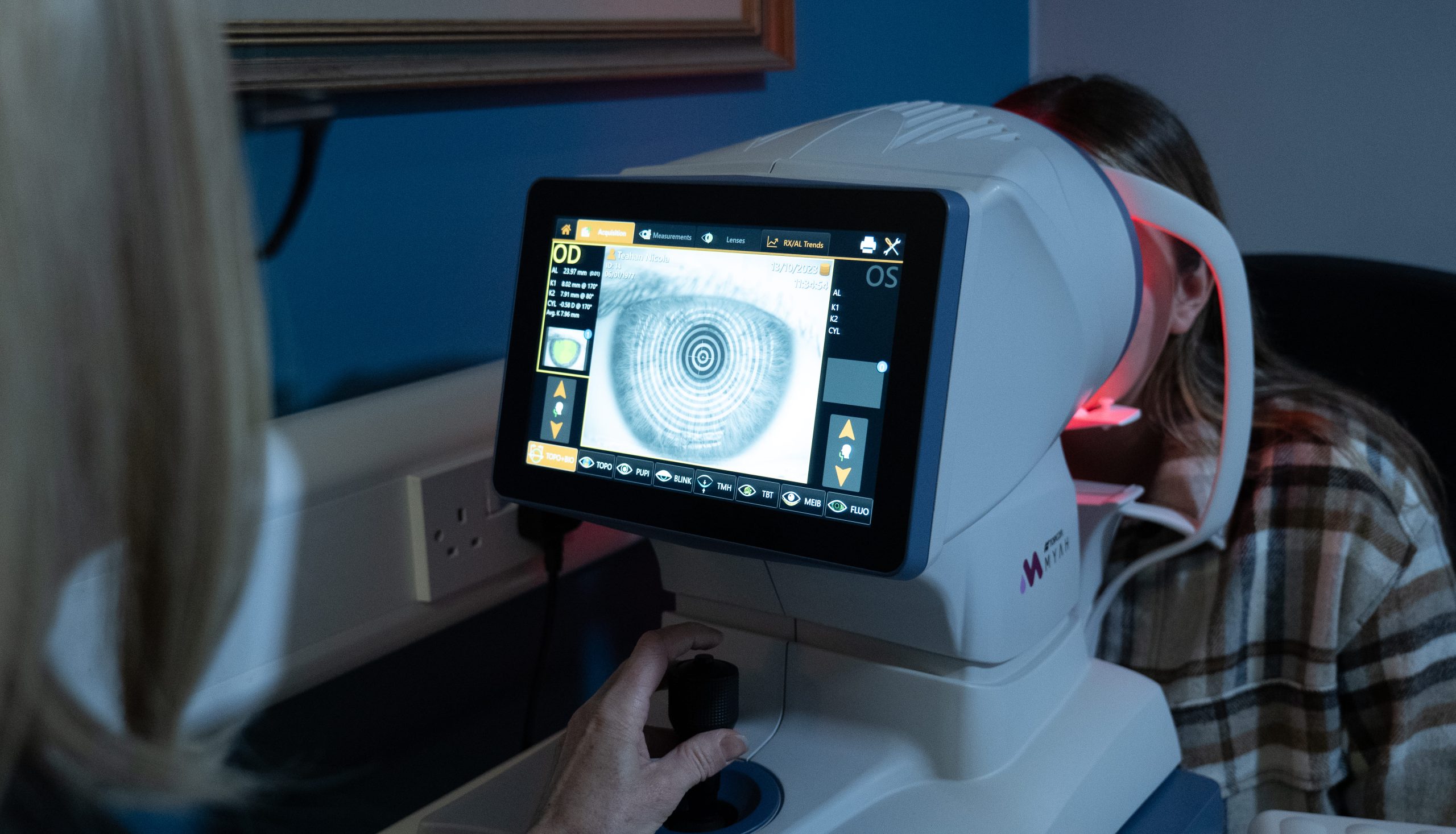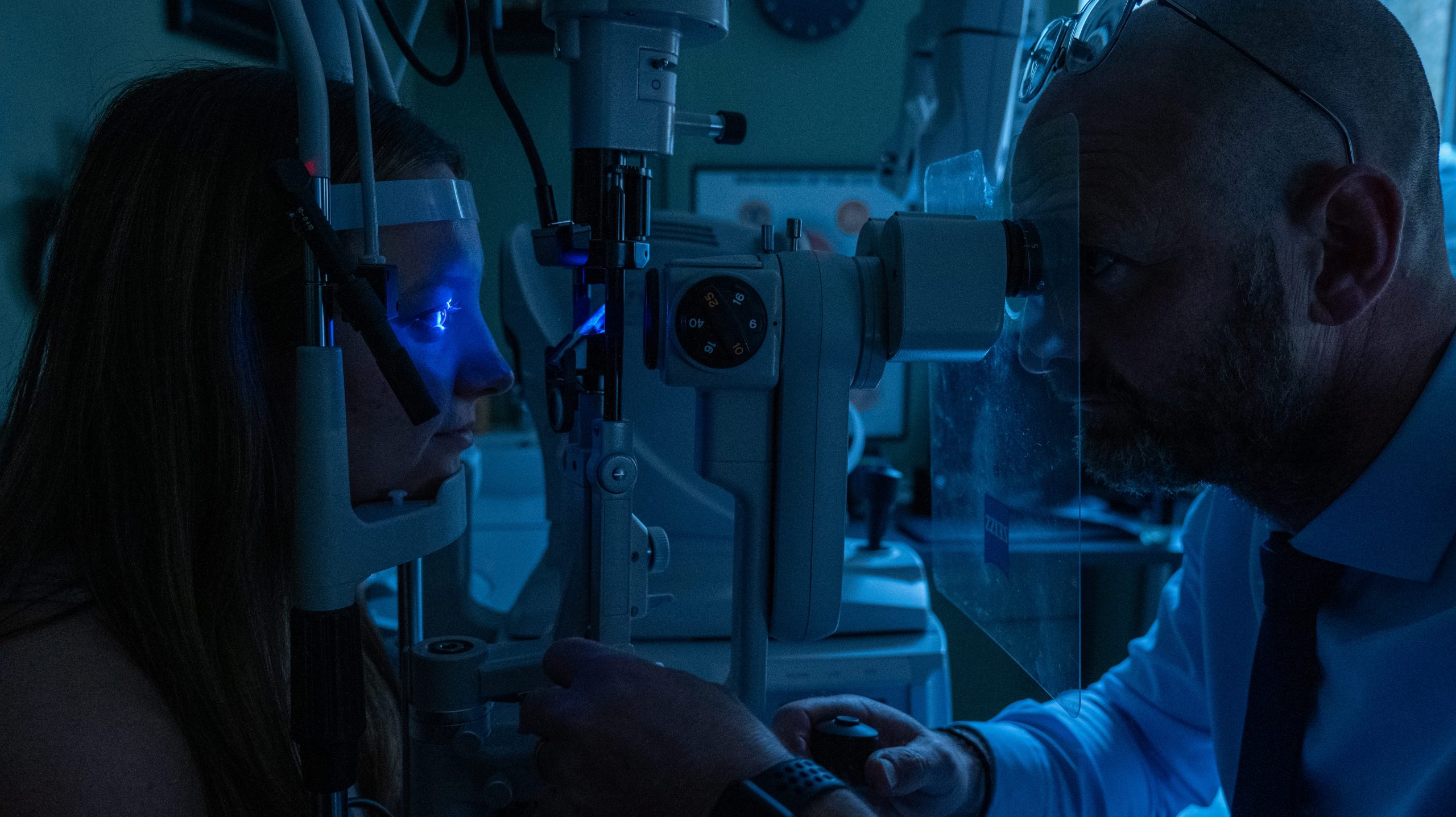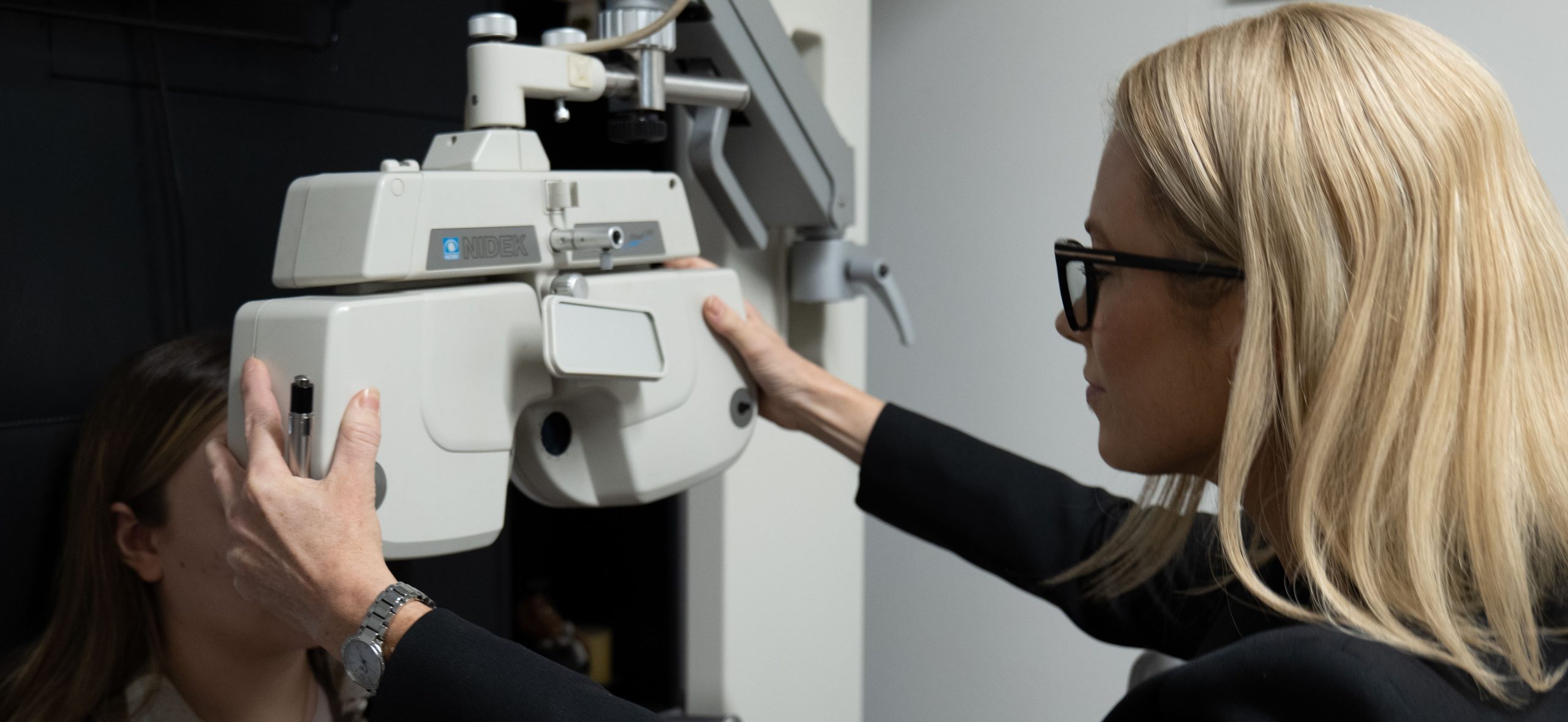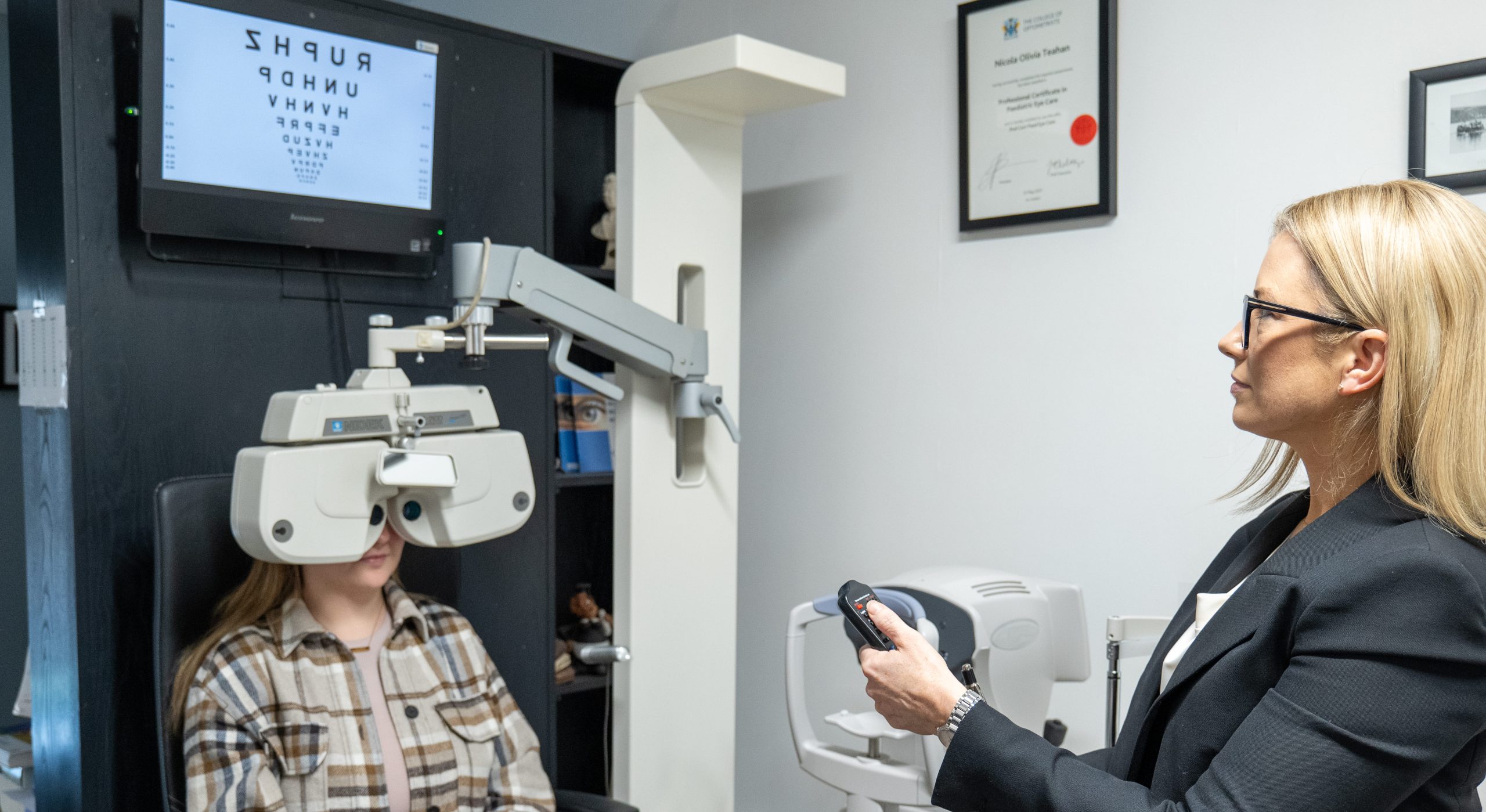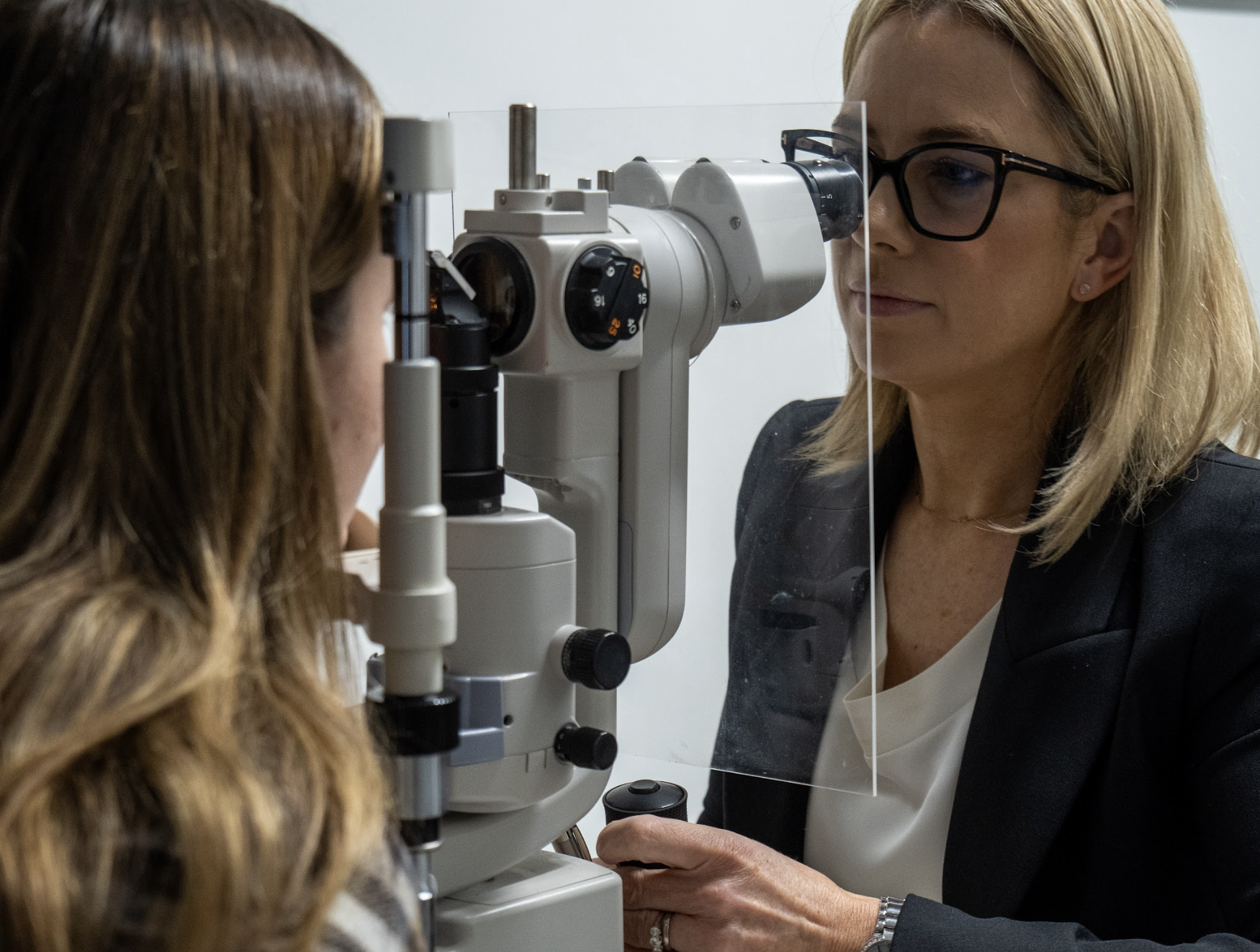Regular eye examinations are important for maintaining optimal vision, eye health and overall well-being. Booking an eye examination at our optometry practice ensures that you receive personalised care from our experienced optometrists where they not only assess your visual acuity, visual function and determine your prescription, but also screen for potential sight threatening eye conditions. Detecting these issues early can significantly enhance treatment outcomes and prevent further complications. Investing in regular eye examinations is a proactive step towards preserving your eyesight and enjoying a clear and comfortable visual experience. Our recommendation is an eye examination every two years. More frequent exams can be recommended by our optometrists in certain situations where regular observation is required. Trust our optometrists to provide thorough and professional eye care tailored to your individual needs.
Begin your journey with our expert optometrists who take the time to understand your unique visual needs, preferences, and concerns. Our comprehensive consultations delve into your concerns and lifestyle, offering insights into potential factors affecting your vision, eye health and overall well-being.
Our optometrists meticulously examine every detail of your eye health, detecting conditions such as cataracts, macular degeneration, retinal disease, glaucoma and more. With us, you can trust that no aspect of your eye health is overlooked.
Any person with symptoms such as blurred vision or double vision, unexplained headaches, eye pain, eye strain, redness, pressure or discomfort in or around the eyes should have an eye examination. Awareness of unusual flashing lights and/or floating spots in the vision should be investigated also.
